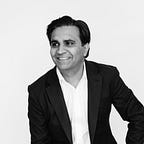How Great Brands Empower You
Psychologist Norman Vincent Peale first published the Power of Positive Thinking back in 1952. The premise was clear, think positively and good things will happen to you. It’s a message that has been translated into 15 languages and achieved around five million sales in print alone. And the reason why is clear — a positive message sells. But let’s consider first the book as a product. What did those five million readers buy? Some critics argued that all they got for their money was a brick of paper. However, these assertions did nothing to dent the book’s success.
“Four years later, they have a 50 percent share of the US running shoe market, more than any company prior.”
Let’s fast forward to the sixties. A small single person distributor has just landed a deal to sell Japanese shoes in the US. Ten years later, he decides he’s learned enough and wants to sell his own. He has someone design a new logo, the Swoosh, and Nike is born. In 1976, Nike starts using the catchphrase, “There is no finish line”. Four years later, they have a 50 percent share of the US running shoe market, more than any company prior. Several experts point out that Nike shoes are in no way superior to other shoes and physiotherapists even claim sticking to the same shoe and brand is bad for foot health — but no one takes any notice.
Two products, which experts tell us don’t deliver on either features or benefits. So what exactly are their buyers buying?
The same general model can be applied to a number of other products — Whole Foods Market sells fruit and vegetables the same as any other greengrocer and MacBook users unleash their creativity using Microsoft Word.
The skeptic among us would say, we’re all being conned but the Service Designer would probably be a little more pragmatic. What Nike, Whole Foods Market and Apple are selling us isn’t so much a product as a commodity. That commodity is positivity. Once we accept that our dollars are paying for much more than the product in our hand, we understand well why we buy — and how to sell commodities better too.
“The experts tell us we could run just as well in a different brand and yet we, Just Do It.”
We put on a pair of Nikes because it makes us feel as if we are taking our training seriously. Serious athletes wear Nike and we aspire to have the same mentality as them, if not the same innate talent. The experts tell us we could run just as well (perhaps even better) in a different brand and yet we, “Just do it”. Anyone who doubts this should look at a Nike ad. Do you see a technical breakdown of features and explanations as to how the product works? No. Their posters sound more like motivational speakers.
We shop at Whole Foods too because the market stays on brand. It doesn’t sell us a green smoothie and offer us a Hershey bar at the checkout — just an organic tasting square. We aspire to eat healthily 24/7 and like a good friend, Whole Foods supports us by pretending it believes we do. It’s just the same as someone giving up smoking. If their friend tells them they’ll never make it, they’re less likely to succeed. But if the friend takes their new smoke-free status as fact, they’re more likely to stick to it. As a result of shopping at Whole Foods, we are more likely to stick to a healthier diet too.
“The book’s critics…saw a clever marketing trick; a combination of autosuggestion, self-hypnosis and the presentation of false evidence.”
So let’s go back to The Power of Positive Thinking and take a look at what it offers its readers. The book basically aims to ensure the reader achieves a permanent constructive and optimistic attitude through constant positive conscious thought. Think positive, the message goes, and great things will happen. But did constant conscious thought deliver this benefit? The book’s critics, both in the 1950s and today claim it didn’t. They saw instead a clever marketing trick; a combination of autosuggestion, self-hypnosis and the presentation of ‘false evidence’. They claimed there was no sign that reading the book and practicing the methods delivered happiness or success. They even carried out studies and showed that those who read the book were no more likely to be successful than those who didn’t. With all this damning evidence, you’d expect a lawsuit to follow. But no one sued. The book had made its readers feel empowered. Even if they didn’t achieve great things, they felt empowered by the message and their association with the product.
“We want to feel good and we know we buy a product to feel good.”
The book is now almost 70 years old and new readers are still buying it for the first time. However, today, a new reader is more likely to see it as a commodity rather than a tool. What’s more, we are more accepting of the elements that were used as criticisms against the book back in the 50’s. Self-hypnosis and autosuggestion are now seen as positive things we want to experience. We want to feel good and we know we buy a product to feel good. The end benefit is no longer shrouded in the illusion of the product. Buying ‘into’ a product or brand provides us all with secondary, intangible benefits. Delivering this commodity has become a science in itself.
